Easy listening is a popular music genre and radio format that was most popular during the 1950s to the 1970s. It is related to middle of the road (MOR) music and encompasses instrumental recordings of standards, hit songs, non-rock vocals and instrumental covers of selected popular rock songs. It mostly concentrates on music that pre-dates the rock and roll era, characteristically on music from the 1940s and 1950s. It was differentiated from the mostly instrumental beautiful music format by its variety of styles, including a percentage of vocals, arrangements and tempos to fit various parts of the broadcast day.

Moondance is the third studio album by Northern Irish singer-songwriter Van Morrison. It was released on 27 January 1970 by Warner Bros. Records. After the commercial failure of his first Warner Bros. album Astral Weeks (1968), Morrison moved to upstate New York with his wife and began writing songs for Moondance. There, he met the musicians that would record the album with him at New York City's A & R Studios in August and September 1969.

New York Dolls is the debut studio album by the American rock band New York Dolls, released on July 27, 1973, by Mercury Records. An influential precursor to the 1970s punk rock movement, the eponymous album has been acclaimed as one of the best debut records in rock music and one of the greatest rock albums ever.

Marquee Moon is the debut album by American rock band Television. It was released on February 8, 1977, by Elektra Records. In the years leading up to the album, Television had become a prominent act on the New York music scene and generated interest from a number of record labels, eventually signing a record deal with Elektra. The group rehearsed extensively in preparation for Marquee Moon before recording it at A & R Recording in September 1976. It was produced by the band's frontman Tom Verlaine and sound engineer Andy Johns.

Robert Thomas Christgau is an American music journalist and essayist. Among the most well-known and influential music critics, he began his career in the late 1960s as one of the earliest professional rock critics and later became an early proponent of musical movements such as hip hop, riot grrrl, and the import of African popular music in the West. He was the chief music critic and senior editor for The Village Voice for 37 years, during which time he created and oversaw the annual Pazz & Jop critics poll. He has also covered popular music for Esquire, Creem, Newsday, Playboy, Rolling Stone, Billboard, NPR, Blender, and MSN Music; he was a visiting arts teacher at New York University. CNN senior writer Jamie Allen has called Christgau "the E. F. Hutton of the music world–when he talks, people listen."

Behaviour is the fourth studio album by the English synth-pop duo Pet Shop Boys, released on 22 October 1990 by Parlophone. A Japanese special edition included a bonus mini CD, exclusive artwork and printed lyrics in a white velvet-like box.

Aftermath is the fourth studio album by the English rock band the Rolling Stones. The group recorded the album at RCA Studios in California in December 1965 and March 1966, during breaks between their international tours. It was released in the United Kingdom on 15 April 1966 by Decca Records and in the United States in late June or early July 1966 by London Records. It is the band's fourth British and sixth American studio album, and closely follows a series of international hit singles that helped bring the Stones newfound wealth and fame rivalling that of their contemporaries the Beatles.

Graffiti Bridge is the twelfth studio album by American recording artist Prince and is the soundtrack album to the 1990 film of the same name. It was released on August 20, 1990, by Paisley Park Records and Warner Bros. Records.

Tutu is an album by jazz trumpeter Miles Davis, released in 1986 by Warner Bros. Records. The album is Miles Davis' tribute to Archbishop Desmond Tutu who was a human rights and anti-apartheid activist. It was recorded primarily at Capitol Studios in Los Angeles and Clinton Recording in New York, except the song "Backyard Ritual", which was recorded at Le Gonks in West Hollywood. Davis received the 1986 Best Jazz Instrumental Performance, Soloist Grammy Award for his performance on the album.

Let It Be is the third studio album by American rock band the Replacements. It was released on October 2, 1984, by Twin/Tone Records. A post-punk album with coming-of-age themes, Let It Be was recorded by the band after they had grown tired of playing loud and fast exclusively as on their 1983 Hootenanny album; the group decided to write songs that were, according to vocalist Paul Westerberg, "a little more sincere."
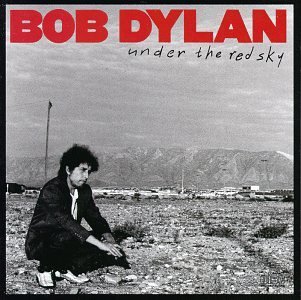
Under the Red Sky is the twenty-seventh studio album by American singer-songwriter Bob Dylan, released on September 10, 1990, by Columbia Records. It was produced by Don Was, David Was, and Dylan.
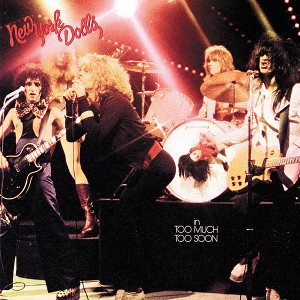
Too Much Too Soon is the second album by the American hard rock band New York Dolls. It was released by Mercury Records on May 10, 1974, and recorded earlier that year at A&R Studios in New York City. Dissatisfied with the recording of their 1973 self-titled debut album, the Dolls' lead singer David Johansen enlisted veteran producer Shadow Morton to produce the sessions. Morton, who had been disenchanted by the music industry, found renewed motivation in the band's energy and undertook the project as a challenge.
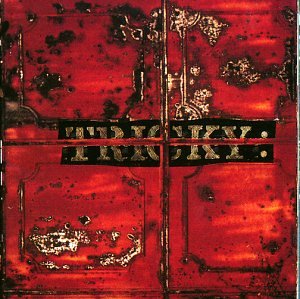
Maxinquaye is the debut album by English rapper and producer Tricky, released on 20 February 1995 by 4th & B'way Records, a subsidiary of Island Records. In the years leading up to the album, Tricky had grown frustrated with his limited role in the musical group Massive Attack and wanted to pursue an independent project. Shortly after, he met with vocalist Martina Topley-Bird, who he felt would offer a wider vision to his music, and signed a solo contract with 4th & B'way in 1993. Tricky recorded Maxinquaye the following year primarily at his home studio in London, with Topley-Bird serving as the album's main vocalist, while Alison Goldfrapp, Ragga and Mark Stewart performed additional vocals.
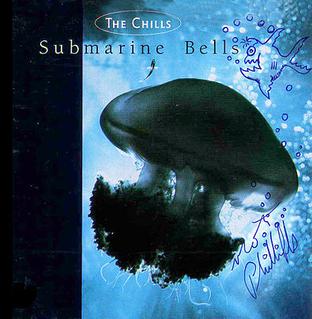
Submarine Bells is an album by New Zealand group the Chills, released in 1990. This was the band's first album on a major label, as Martin Phillipps signed to Warner Bros. Records subsidiary Slash Records, to release the album in the U.S. The album reached #1 on the New Zealand album charts and had significant support from American college radio. The album was awarded gold status in New Zealand and represents the peak of the Chills' popularity at home. It is considered to be one of the defining albums of the Dunedin sound. The supporting tour for Submarine Bells culminated in a triumphant home-coming concert in Dunedin Town Hall.

House of Music is the fourth and final album by American R&B band Tony! Toni! Toné!, released on November 19, 1996, by Mercury Records. It follows the success of the band's 1993 album Sons of Soul and a hiatus during which each member pursued individual musical projects.

Of Human Feelings is an album by American jazz saxophonist, composer, and bandleader Ornette Coleman. It was recorded on April 25, 1979, at CBS Studios in New York City with his band Prime Time, which featured guitarists Charlie Ellerbee and Bern Nix, bassist Jamaaladeen Tacuma, and drummers Calvin Weston and Coleman's son Denardo. It followed the saxophonist's failed attempt to record a direct-to-disc session earlier in March of the same year and was the first jazz album to be recorded digitally in the United States.
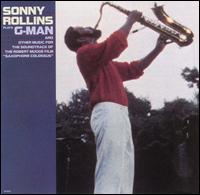
G-Man is a live album by American jazz saxophonist Sonny Rollins. It was recorded at an outdoor concert on August 16, 1986, held at Opus 40 in Saugerties, New York. The concert was filmed for a documentary about Rollins, directed by Robert Mugge, before being released on record in November 1987 by Milestone Records. G-Man received positive reviews from critics, some of whom called it one of Rollins' best albums.

Christgau's Record Guide: Rock Albums of the Seventies is a music reference book by American music journalist and essayist Robert Christgau. It was first published in October 1981 by Ticknor & Fields. The book compiles approximately 3,000 of Christgau's capsule album reviews, most of which were originally written for his "Consumer Guide" column in The Village Voice throughout the 1970s. The entries feature annotated details about each record's release and cover a variety of genres related to rock music.
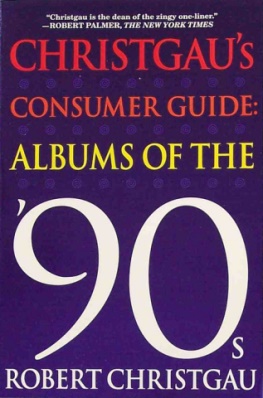
Christgau's Consumer Guide: Albums of the '90s is a music reference book by American music journalist and essayist Robert Christgau. It was published in October 2000 by St. Martin's Press's Griffin imprint and collects approximately 3,800 capsule album reviews, originally written by Christgau during the 1990s for his "Consumer Guide" column in The Village Voice. Text from his other writings for the Voice, Rolling Stone, Spin, and Playboy from this period is also featured. The book is the third in a series of influential "Consumer Guide" collections, following Christgau's Record Guide: Rock Albums of the Seventies (1981) and Christgau's Record Guide: The '80s (1990).
Tom Hull is an American music critic, web designer, and former software developer. Hull began writing criticism for The Village Voice in the mid 1970s under the mentorship of its music editor Robert Christgau, but left the field to pursue a career in software design and engineering during the 1980s and 1990s, which earned him the majority of his life's income. In the 2000s, he returned to music reviewing and wrote a jazz column for The Village Voice in the manner of Christgau's "Consumer Guide", alongside contributions to Seattle Weekly, The New Rolling Stone Album Guide, NPR Music, and the webzine Static Multimedia.





















